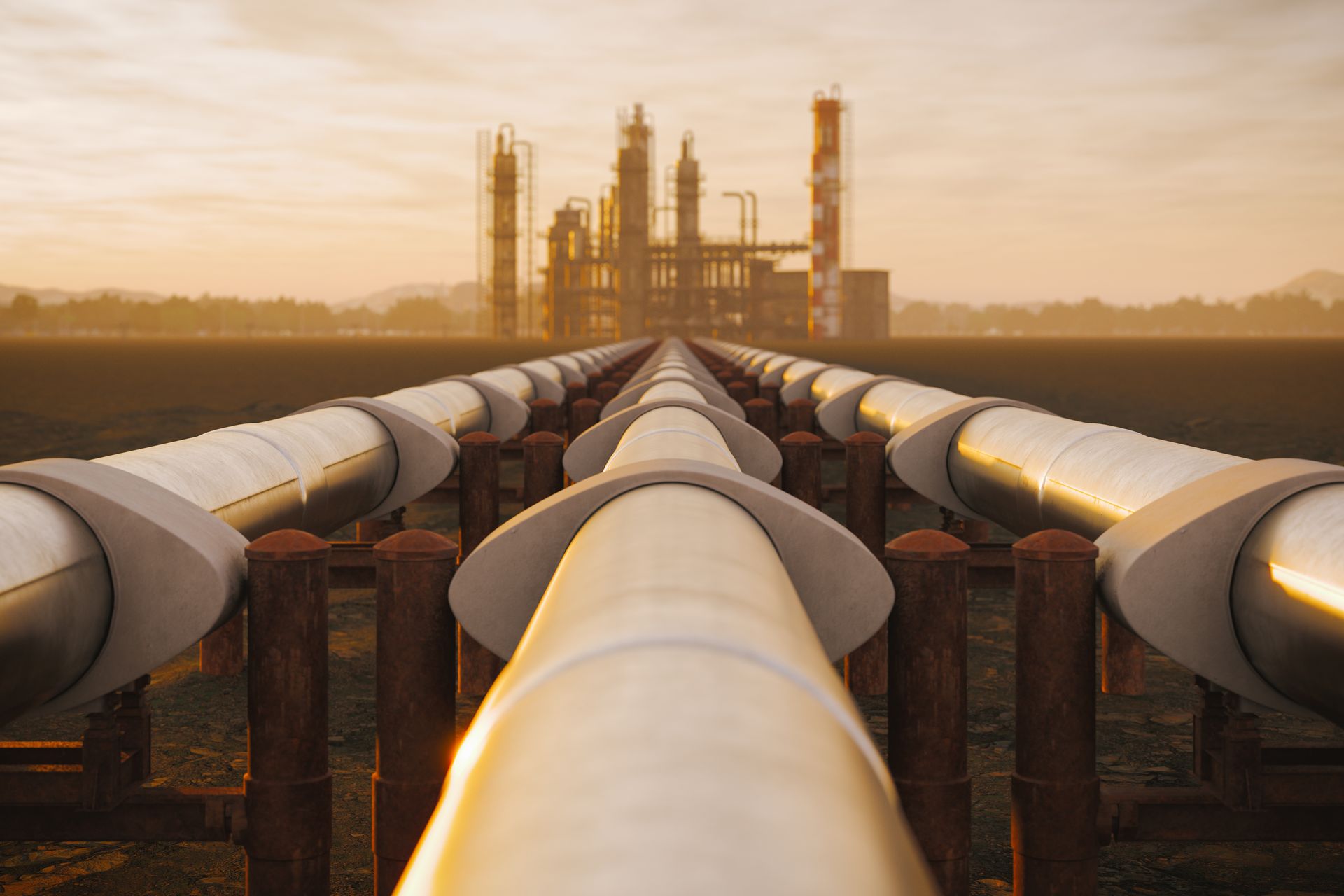Why German Companies Should Prepare Now for the Next Challenge in the Energy Market
October 17, 2023
- New Insight

In response to Russia’s invasion of Ukraine and curtailed gas imports from Russia, gas prices skyrocketed in Europe and around the world. Therefore, in July 2022, the EU member states pledged to reduce their gas consumption by 15 per cent and thus make themselves less dependent on Russian supplies.¹
In the last few years before the current crisis, Germany relied on Russia for more than half of its gas supply, faced a particularly difficult situation as higher prices, increased demand and potential shortages all threatened to converge in winter 2022-23.After Germany ended Russian pipeline imports following the Nord Stream explosions in September 2022, its new LNG import capacities came on-stream in January 2023 and increased the country’s ability to source gas from global LNG markets..²´³ At the same time, a mild winter dampened demand for energy, so prices remained relatively low.
Going forward, Germany and its energy end users should not count on another mild winter. Harsher temperatures and a particularly late cold spell (at times when gas storage volumes might already be reduced) could put significant pressure on gas and power markets, and skew prices upwards.
A Holistic Approach to Preparation
As Germany (and Europe) shifts towards generating electricity from wind and solar power, the country’s energy system becomes more susceptible to adverse weather events. The droughts in Europe during the summer of 2022 — which caused low river levels — demonstrated limitations on hydroelectric production, hard-coal-fired energy and, to a lesser extent, nuclear power.⁴
Aus der Unberechenbarkeit des Wetters und der weiterhin angespannten Gasversorgungslage ergibt sich daher der Bedarf zum planvollen Management von Energiebezug und -einsatz in Unternehmen.
Für die Geschäftsführung heißt es daher bereits jetzt, aktiv zu werden. Auch wenn der Winter gefühlt noch in weiter Ferne liegt, werden Führungskräfte, die frühzeitig Strategien für die kalte Jahreszeit entwickeln, ihr Unternehmen flexibler und widerstandsfähiger für den Ernstfall aufstellen. Der Schlüssel liegt in einer ganzheitlichen Vorbereitung: Das Management muss genau wissen, wie Risiken reduziert werden können, über solide Kenntnisse der finanziellen Situation des Unternehmens verfügen und einen klaren Plan für die Kommunikation mit Kapitalgebern, Banken, MitarbeiterInnen und Kunden haben, wenn die Preise wieder steigen.
The unpredictability of the weather and the continuing tense gas supply situation therefore require the systematic management of energy procurement and use in companies. Now is the time for company managers to act. While winter may feel like it’s a long way off, managers who start developing strategies before the cold months will have more flexibility and resiliency should the worst occur. The key is to prepare holistically: Management must have a clear idea of how to mitigate risk, a solid grasp on the company’s financial standing and a plan to communicate intentions to financiers, banks, employees and clients if prices rise again.
Mitigate Risk from Supply Shock
A good starting place for companies is to conduct a scenario analysis that assesses the potential impact of a tightening energy market on operations. While managers must understand how supply shocks could affect their organisations, they must also take a longer view based on the government’s Energiewende transition policy, which is designed to transform the energy market from fossil fuels to renewables in the coming decades.⁵
Energy-intensive industries should especially pay attention to procurement over the long term. Specifically, this applies to contract terms for their electricity and gas supply that extend beyond one year. In these situations, entering into a power purchase agreement (“PPA”) directly with an operator of renewable assets (wind or solar PV) might be a good option, as it can hedge against price increases while also reducing a company’s carbon footprint.
Assess the Financial Situation
Depending on their current financial standing, companies that could be severely impacted by high energy prices should explore various options right away. These options include, for instance, temporarily relocating operations to facilities outside of Europe to ensure competitive pricing and maintain market viability. Companies that are mandated by law to reduce energy consumption or increase energy efficiency would require additional investments and medium- to long-term planning. Since other, further-reaching government measures such as subsidised electricity prices are still an open question, it’s important to monitor developments closely in the months ahead.
In some cases, distressed companies whose capital or liquidity are severely impacted by energy costs may want to consider restructuring. This is a drastic step, of course, but it can lead to long-lasting solutions.
Communicate with Stakeholders
As with all companies today, transparency is at the heart of sound communications and trust. Organisations can prepare for a new energy challenge by communicating plans like those listed above to all stakeholders, including employees, clients, banks and other financiers. At a minimum, it’s important to begin talking with clients about price increases and cost covering as early as possible.
Leadership will play a key role in setting priorities and enabling teams to make the right decisions. Becoming more resilient as an organisation relies on leaders who are resilient themselves and are able to manage ambiguity and uncertainty. In today’s volatile, complex energy environment, leaders must be able to act quickly and make swift decisions.
Energy-intensive industries should especially pay attention to procurement over the long term. Specifically, this applies to contract terms for their electricity and gas supply that extend beyond one year. In these situations, entering into a power purchase agreement (“PPA”) directly with an operator of renewable assets (wind or solar PV) might be a good option, as it can hedge against price increases while also reducing a company’s carbon footprint.
Assess the Financial Situation
Depending on their current financial standing, companies that could be severely impacted by high energy prices should explore various options right away. These options include, for instance, temporarily relocating operations to facilities outside of Europe to ensure competitive pricing and maintain market viability. Companies that are mandated by law to reduce energy consumption or increase energy efficiency would require additional investments and medium- to long-term planning. Since other, further-reaching government measures such as subsidised electricity prices are still an open question, it’s important to monitor developments closely in the months ahead.
In some cases, distressed companies whose capital or liquidity are severely impacted by energy costs may want to consider restructuring. This is a drastic step, of course, but it can lead to long-lasting solutions.
Communicate with Stakeholders
As with all companies today, transparency is at the heart of sound communications and trust. Organisations can prepare for a new energy challenge by communicating plans like those listed above to all stakeholders, including employees, clients, banks and other financiers. At a minimum, it’s important to begin talking with clients about price increases and cost covering as early as possible.
Leadership will play a key role in setting priorities and enabling teams to make the right decisions. Becoming more resilient as an organisation relies on leaders who are resilient themselves and are able to manage ambiguity and uncertainty. In today’s volatile, complex energy environment, leaders must be able to act quickly and make swift decisions.
In May the German utility giant E.ON warned that turmoil in European energy markets was not over and that the situation could deteriorate in the future, according to a Bloomberg News article.⁶ The article went on to say that “analysts have warned that a sudden rebound in demand and increased competition from Asia for supplies could reignite volatility in the market.”
One factor about market volatility the article did not mention? The weather.
Footnotes:
¹: “Member States Commit to Reducing Gas Demand by 15% Next Winter.” European Council, July 26, 2022.
²: Nichols, Michelle. “Germany Tells UN: Nord Stream Inquiry Found Subsea Explosive Traces on Yacht.” Reuters, July 11, 2023.
³: Russell, Clyde. “Column: Global LNG Volumes Hit Record High as Europe Crowds out Poorer Asia.” Reuters, January 12, 2023.
⁴: Horowitz, Jason. “Heat and Drought in Europe Strain Energy Supply.” The New York Times, August 18, 2022.
⁵: “Energiewende - World Nuclear Association", n.d.
⁶: Fokuhl, Josefine. “Energy Crunch Looms in Europe as Crisis Not over, EON Warns.” Bloomberg.Com, May 10, 2023.
Your Contacts
 Karsten Schulze
Karsten SchulzeSenior Partner & Member of the Board